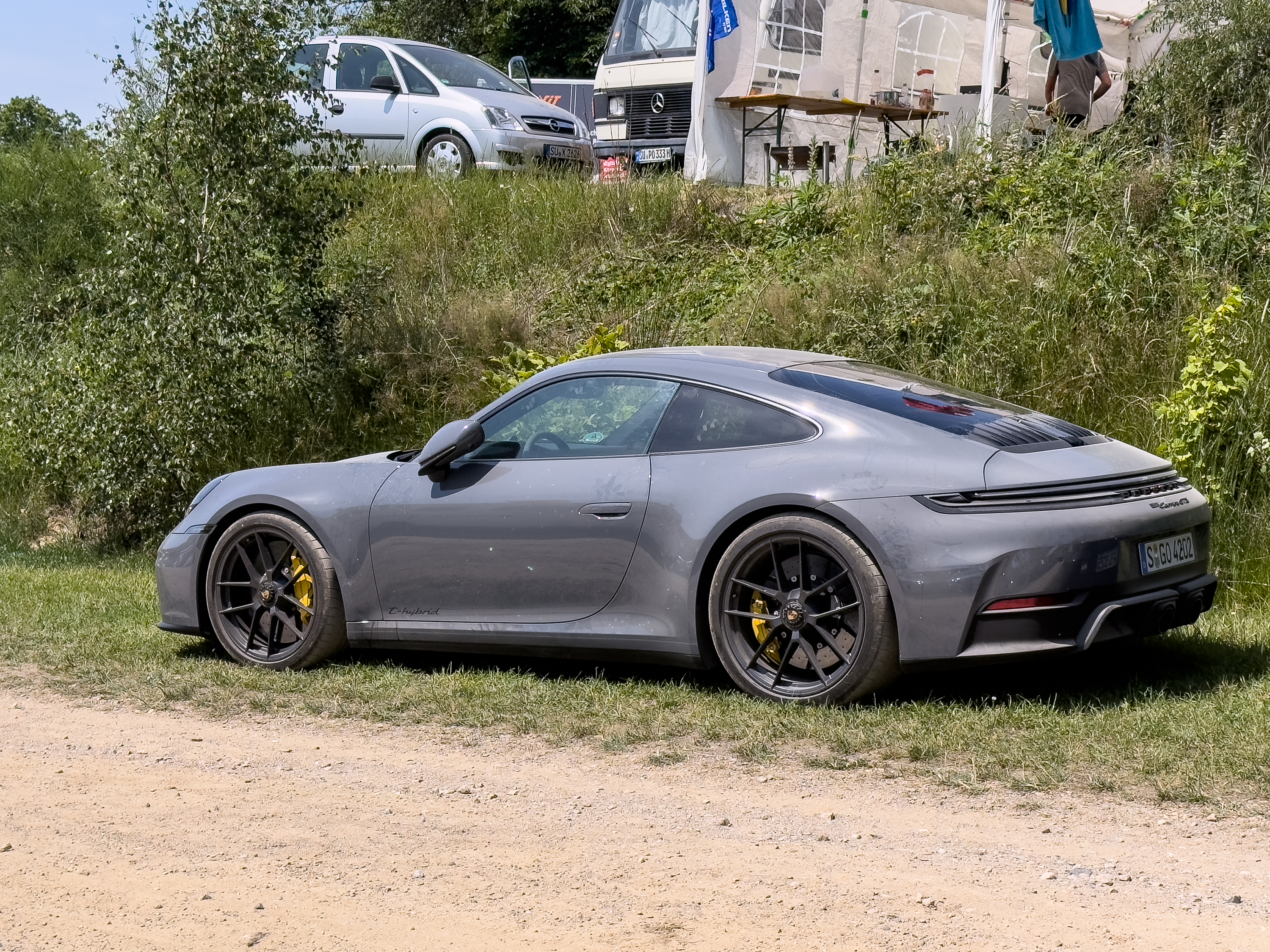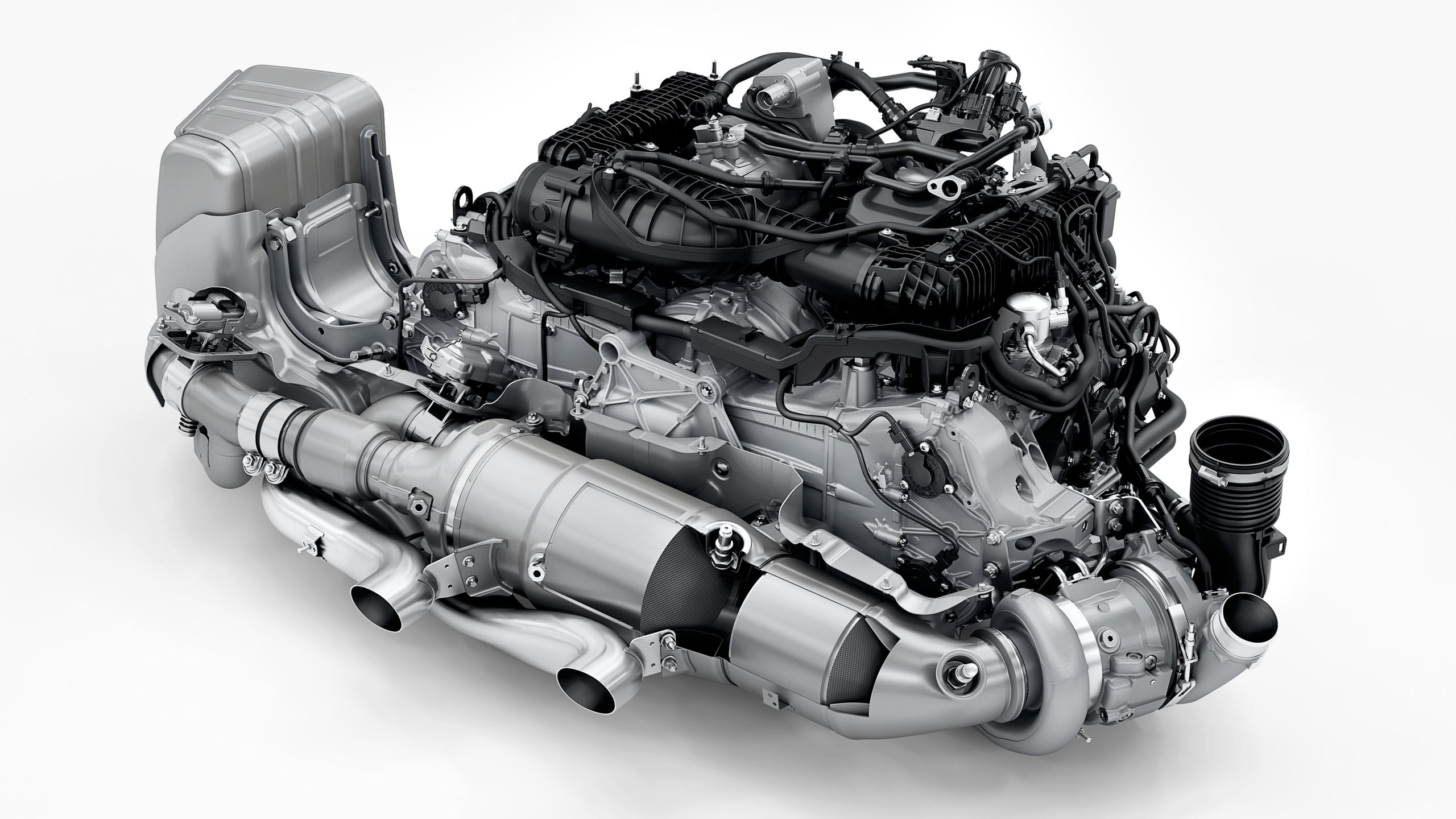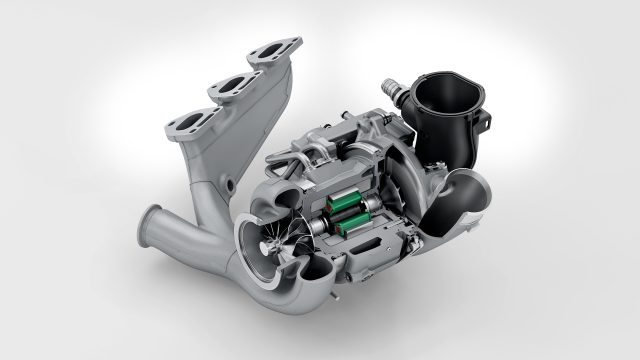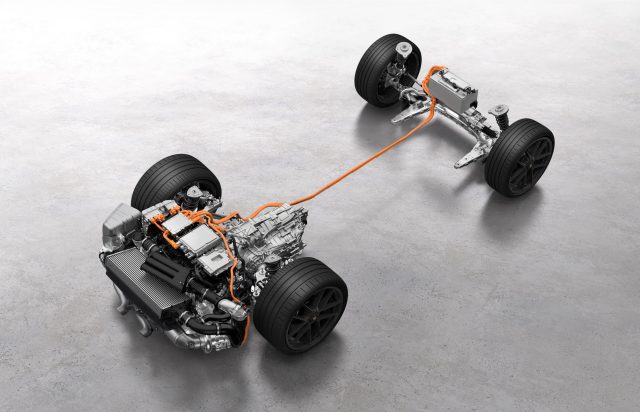The added displacement—0.6 L larger than the engine you’ll find in the regular 911—is to compensate for not being able to alter the fuel ratio. And for the first time in several decades, there’s now only a single turbocharger. Normally, a larger-capacity engine and a single big turbo should be a recipe for plenty of lag, versus a smaller displacement and a turbocharger for each cylinder bank, as the former has larger components with more mass that needs to be moved.
The GTS engine grows in capacity by 20 percent.
Porsche
I’ll have to stop writing that F1 MGU-Hs have no road relevance now, because that’s what Porsche has fitted to the GTS’s turbocharger.
Porsche
This is the rear-wheel-drive GTS powertrain. The traction battery is that silver box above the front axle.
Porsche
That’s where one of the two electric motors comes in. This one is found between the compressor and the turbine wheel, and it’s only capable of 15 hp (11 kW), but it uses that to spin the turbine up to 120,000 rpm, hitting peak boost in 0.8 seconds. For comparison, the twin turbos you find in the current 3.0 L 911s take three times as long. Since the turbine is electrically controlled and the electric motor can regulate boost pressure, there’s no need for a wastegate.
The electrically powered turbocharger is essentially the same as the MGU-H used in Formula 1, as it can drive the turbine and also regenerate energy to the car’s traction battery. (The mighty 919 Hybrid race car, which took Porsche to three Le Mans wins last decade, was able to capture waste energy from its turbocharger, but unlike the 911 GTS or an F1 car, it didn’t use that same motor to spin the turbo up to speed.)
On its own, the turbocharged engine generates 478 hp (357 kW) and 420 lb-ft (570 Nm). However, there’s another electric motor, this one a permanent synchronous motor built into the eight-speed dual-clutch (PDK) transmission casing. This traction motor provides up to 53 hp (40 kW) and 110 lb-ft (150 Nm) of torque to the wheels, supplementing the internal combustion engine when needed. The total power and torque output are 532 hp (397 kW) and 449 lb-ft (609 Nm).

No Porsches were harmed during the making of this review, but one did get a little dusty.
Credit:
Jonathan Gitlin
Now that’s what I call throttle response
Conceptually, the T-Hybrid in the 911 GTS is quite different from the E-Hybrid system we’ve tested in various plug-in Porsches. Those allow for purely electric driving thanks to a clutch between transmission and electric traction motor—that’s not present in the T-Hybrid, where weight saving, performance, and emissions compliance were the goal rather than an increase in fuel efficiency.
Source link




:quality(75)/https%3A%2F%2Fassets.lareviewofbooks.org%2Fuploads%2FWhat%20is%20intelligence.jpg)
